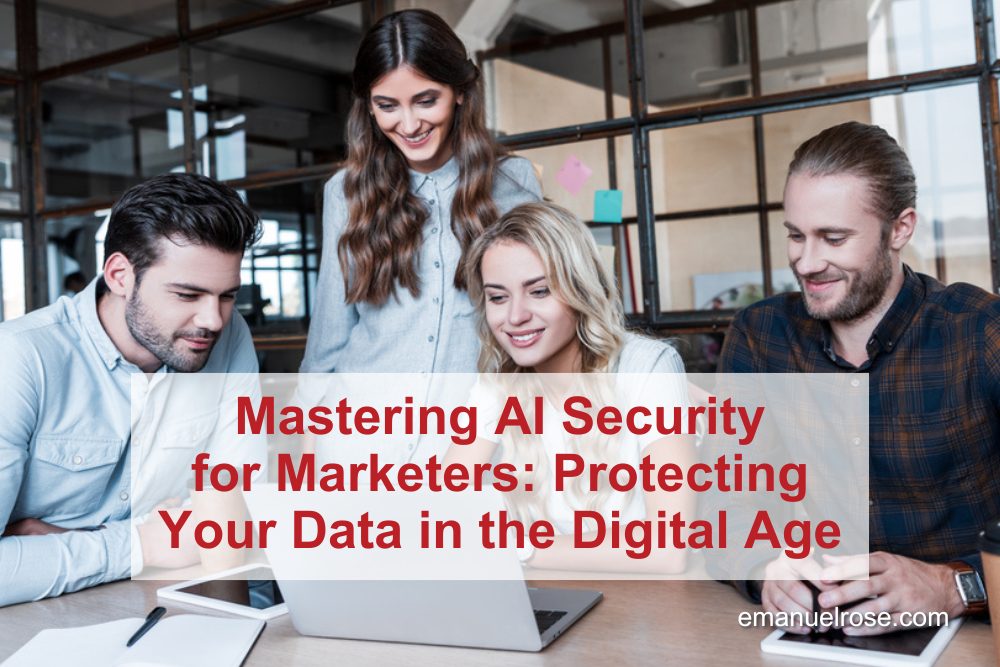Protecting Your Data in the Digital Age
The Importance of Security in AI-Powered Marketing
Understanding Human-Centric Security Approaches
The Role of AI in Enhancing Security Measures

The Human Element in Cybersecurity
Real-World Examples of Social Engineering
Best Practices for Marketers in AI Security
- Stay Informed: Keep abreast of the latest developments in AI and cybersecurity. Resources like Gartner and industry frameworks such as NIST and CTIM are valuable for staying informed about new threats and protective measures.

- Understand Your Data: Data is the lifeblood of AI. Ensure that your data is clean, well-organized, and secure. Implement data integrity measures to prepare your organization for AI adoption.
- Emphasize Training: Educate your team about the importance of cybersecurity. Training on recognizing phishing attempts and other social engineering tactics can significantly reduce your vulnerability.
- Adopt a Layered Defense: A multi-layered defense strategy, incorporating both technological solutions and human vigilance, offers the best protection. Firewalls, antivirus software, and AI-based behavioral analysis should all be part of your security framework.
- Test and Evaluate: Regularly test your security measures to ensure they are effective. Conducting simulations and penetration tests can help identify vulnerabilities before actual attacks occur.
Custom AI Solutions for Mid-Market Businesses
While AI has often been associated with large enterprises, smaller businesses can also benefit from custom AI solutions. You can implement AI tools that enhance efficiency and drive revenue by carefully evaluating your needs and ensuring a clear return on investment (ROI). It’s crucial to avoid the trap of adopting AI for its own sake. Instead, focus on how AI can address specific business challenges and deliver tangible benefits.
AI Readiness: Preparing for the Future

As AI technology continues to evolve, preparing your organization is essential. Clean up your data, optimize your cloud infrastructure, and ensure your systems are ready for AI integration. Leveraging credits and partnerships with major providers like AWS, Azure, and Google can also help manage costs and streamline implementation.
The convergence of AI and cybersecurity presents both opportunities and challenges for marketers. Marketers can effectively safeguard their operations by adopting a human-centric approach, staying informed about the latest developments, and emphasizing the importance of data integrity. Training and a multi-layered defense strategy are crucial in mitigating risks and ensuring a secure marketing environment.

